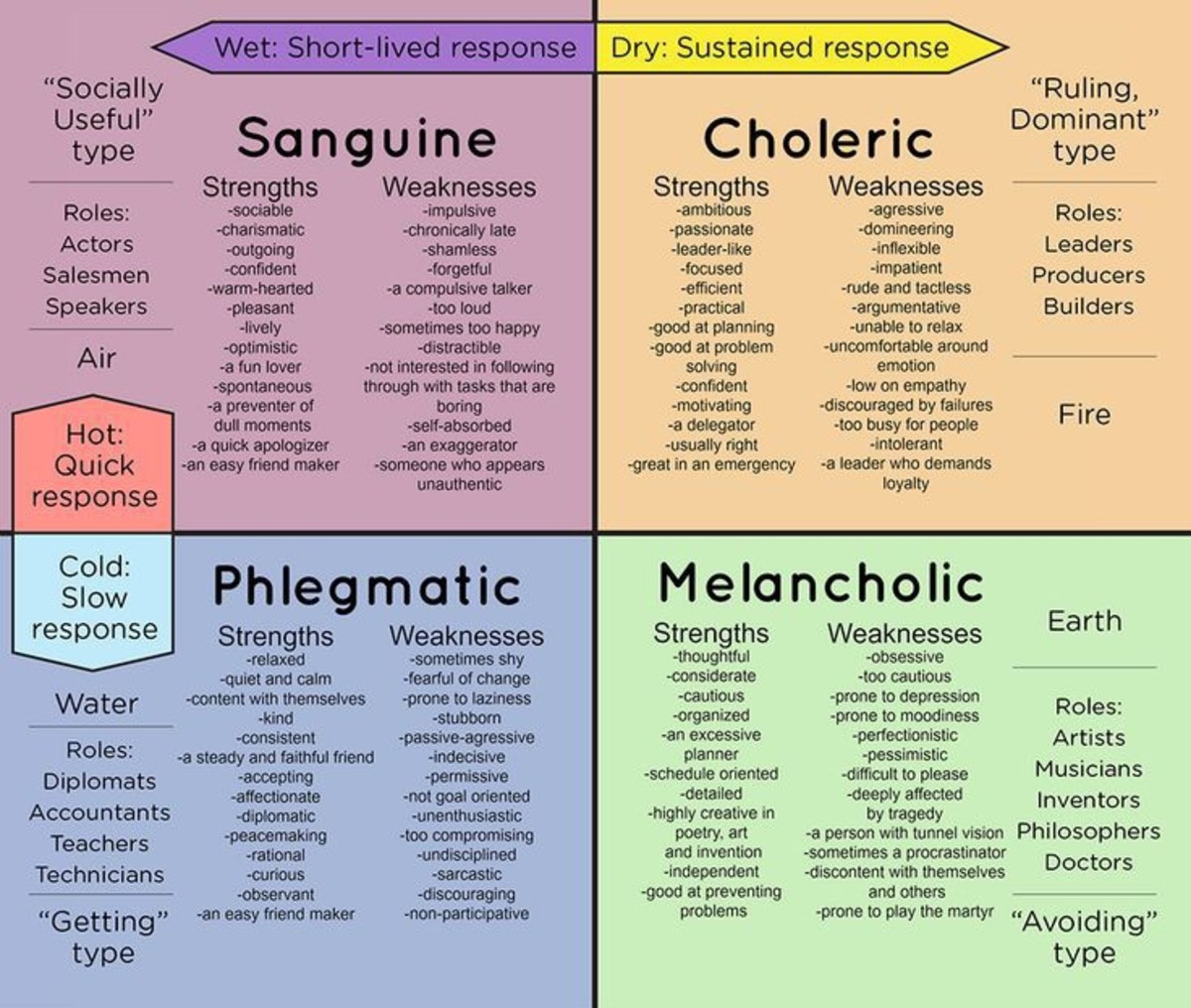The Art of Anger Management

Anger
Anger is a universal human experience that can be found in any personality and temperament, shy or extroverted, perfectionist or laid back, and it can be expressed in many ways. We use the term anger to describe a number of feelings and behaviors: frustration, irritability, annoyance, blowing off steam, fretting. In order to manage anger effectively, productively, it's important to realize how each of these reactions is tied to the emotion we call anger.
Steps toward Effective Anger Management
Recognizing the many faces of anger.
Bert was an easy-going man in his late 20's, raised in a Christian home where the biblical proverb, “A soft answer turns away wrath,” was quoted more frequently than John 3:16. He couldn't recall a time when his mother and father ever had an argument, and none of Bert's friends could recall a time when he ever raised his voice in anger. Bert's wife, Ellen, is another story. Raised in a large family, coming from what she calls a “hot-blooded ethnic background where screaming is just our way of saying, 'I love you.'” Ellen was never shy about expressing her anger, freely, and loudly, at the drop of a hat.
These contrasting styles of dealing with anger (or, in Bert's case, not dealing with it) were a major source of conflict in their marriage. Bert always felt threatened by Ellen's anger, and he also felt smugly self righteous. “You really need to deal with your problem, Ellen,” he would say. “As Christians, were not supposed to do things like this. Remember Proverbs 15:1 'A soft answer turns away wrath, but a harsh word stirs up anger.'”
After being lectured by her husband on the evils of anger for the umpteenth time, Ellen decided it was time to provoke a showdown. After he quoted his favorite verse of Scripture, she responded, “Are you telling me you never get angry, Bert?” “I give my anger to the Lord,” he said softly. “Ah,” Said Ellen, taking a handful of CD's from the rack atop the stereo. “Well I'm glad you can be so spiritual and mature about your feelings.”
“What are you doing?” Asked Richard, a quizzical expression on his face. “I'm going to see if you are really as saintly as you claim,” she said, placing the stack of CD's on the floor at her feet. “Do you know what these are?” “Oh, no. You wouldn't!” “these are your favorite CD's in the world.” Then she leaped up into the air and came down with both feet on the CD's. Shards of plastic flew in all directions.
Although we don't endorse Ellen's destructive act, it's clear Bert is the one in this relationship who had a greater problem dealing with anger. What Bert failed to understand is everybody feels anger from time to time. It's normal. In fact, anger is a God-given emotion. True, the way people usually deal with this emotion is destructive and unhealthy. But Bert needed to learn suppressing and denying anger is no more healthy than exploding. Bert's anger was real, no matter how he tried to mask it. He needed to learn how to recognize the different faces of anger.
Is anger good or bad? The answer: It all depends. There are times when anger is incorrectly associated with trivial matters. There are times when anger may be associated with legitimate concerns but is managed irresponsibly. For example, it is legitimate to become angry if you see someone mistreating an animal. But it would be irresponsible to take a gun and shoot that person.

Anger Awareness
Whether you identify more with Bert or will Ellen, you too may have difficulty recognizing anger's many faces. The following inventory can help you become more aware of the operation of anger in your life and relationships. Check the statements that apply to you.
-
Impatience comes over me more frequently than I would like.
-
I nurture critical thoughts quite easily.
-
When I am displeased with someone, I sometimes shut down communication or withdraw.
-
I feel inwardly annoyed when family and friends do not comprehend my needs.
-
Tension mounts within me as I tackle a demanding task.
-
I feel frustrated when I see someone else having fewer struggles than I do.
-
When facing an important event, I may excessively ponder how I must manage it.
-
Sometimes I walk in another direction to avoid seeing someone I don't like.
-
When discussing a controversial topic, my tone of voice is likely to become passionate and strong.
-
I can accept a person who admits their mistakes, but I have a hard time accepting someone who refuses to admit their own weaknesses.
-
When I talk about my irritations, I don't really want to hear an opposite point of view.
-
It's hard for me to forget when someone does me wrong.
-
When someone confronts me from a misinformed position, I am thinking of my rebuttal as they speak.
-
Sometimes my discouragement makes me want to quit.
-
I can be quite aggressive in my business pursuits or even when playing a game just for fun.
-
I struggle emotionally with the things in life that are unfair.
-
Although I know it may not be right, I sometimes blame others for my problems.
-
When someone openly speaks ill of me, my natural response to think of how I can defend myself.
-
Sometimes I speak badly about a person, not really caring how it may harm their reputation.
-
I may act calmly on the outside while feeling frustrated on the inside.
-
Sarcasm is a trait I use in expressing humor.
-
When someone is clearly annoyed with me, too easily I will jump into the conflict.
-
At times I struggle with moods of depression or discouragement.
-
I have been known to take on an “I don't care” attitude toward the needs of others.
-
When I am in an authority role, I sometimes speak too strongly or insensitively.
Now go back and count the number of statements you checked. Everyone will recognize some of these characteristics, so don't worry about marking them.
If you check 10 items, your anger level is probably more constant than you might like. If you checked 15 or more, you can probably recount many disappointments and irritations. This indicates you are vulnerable to the extreme ill effects of open anger and rage, or to repressed anger in the form of guilt, bitterness, and resentment. But don't give up! Now you have become more aware of the many faces of anger, you have taken a giant step toward managing it.
If you are interested in gaining a broader perspective of yourself, ask a close friend or trusted family member to complete the inventory, answering the questions the way they think you would respond. It's often helpful and instructive to have other people mirror our character and personality traits, so we can see ourselves more objectively. Try to set aside any defensiveness, and anger, as you do this part of the anger awareness inventory.

You will notice from the items you checked anger can be expressed through a wide array of behaviors. Write down the expressions that seem to be the most common for you. For example, “I resort to the silent treatment when someone offends me,” or “I am often critical and sarcastic.”
You may show your anger in ways other than those mentioned in the inventory. As you become more self-aware, you will probably discover a number of such hidden expressions of anger.
Anger managed in a healthy and responsible way is linked to a reasonable issue of communicating in a caring and rational manner. Whenever you become angry, there are options as to how to overcome that and, these options constitute your second step in healthy management.
Many keep themselves in a nonproductive anger cycle. First, there is a painful circumstance. A situation occurs in which the individual feels they have been devalued, their worth as a person has been insulted, some need in that person's life has been ignored or unmet, or someone is shown disregard and contempt for values or convictions extremely important to them. Such a painful circumstance can trigger angry emotions.
At this point, most will respond by attempting to control it. For example, convincing others of their errors, moving to a different part of the house, or plunging into a project to let off some steam. This isn't always wrong, but it can be risky because it does not guarantee anger release. Instead, it can lead to increased friction in personal relationships, which increases the angry person's emotional confusion. This moves the angry person back to the beginning of the cycle by creating an ongoing tendency toward painful intrusions. How do you break the cycle of anger? By making a choice to manage your anger.
Nancy is hardly alone in her confusion. We have all seen that corrosive kind of anger, either in ourselves or others. It's painful and destructive. So it's understandable many people conclude, “If this is what anger does, I want nothing to do with it.” Once you have learned to identify anger and understand it, you can learn to distinguish right and wrong ways of managing it. Although you may not always like the presence of anger, you can make choices about how to handle it.
No two people are exactly alike in managing their anger. Temperaments and circumstances vary widely. But they are five general choices you can make when painful circumstances trigger an angry response within you you can choose to respond by:
-
Suppressing Anger
-
Open Aggression
-
Passive Aggression
-
Assertive Anger
-
Dropping Anger
Obviously, the first three choices are unhealthily and tend to perpetuate the anger cycle. Choices four and five interrupt the anger cycle and lead to effective, healthy management of anger.
How about you? Do you ever hold your anger inside in an unhealthy way? To find out, check the items that apply to you:
-
I am very image conscious
-
I don't like to let others know my problems.
-
Even when I feel very flustered I portray myself publicly as having it all together.
-
I am rather reserved about sharing my problems or frustrations.
-
If a family member or friend upsets me I can let days pass without even mentioning it.
-
I have a tendency to be depressed and moody.
-
Reasonable thinking is common for me, although many people would never suspect it.
-
I have suffered with physical complaints, for example, headaches, stomach ailments, and sleep irregularity.
-
There are times when I wonder if my opinions or preferences are really valid.
-
Sometimes I feel paralyzed when confronted by an unwanted situation.
-
I am not inclined to initiate conversations about sensitive or troublesome topics.
If you checked five or more of these statements, you probably have a solid pattern of repressing your anger.
People who habitually suppress their anger have usually been trained in early life to think anger and other emotions are not normal or acceptable. They frequently have a history of having their feelings, ideas, and perceptions invalidated. They grow up fearing powerful retaliation if they register disagreement. And they are so convinced their feelings will be rejected or disparaged they decide, “What's the use?” Their suppression of anger represents a feeling of personal defeat. They are saying, in effect, “I don't matter. My feelings don't matter enough to be expressed.”
Another explanation for suppressing anger is a smug, superior mindset, as demonstrated by Richard toward his wife Ellen. Usually these people tend toward rigidity of belief, including religious beliefs. Such people also tend to need the approval of the “right” people. They suppress their anger in the belief it's dangerous to display human imperfection that might cause them to be lowered in the estimation of others.
Suppressing anger does not eliminate it. It only drives anger underground where it festers into a toxic emotion called bitterness. Suppression is unhealthy and creates unhealthy, dishonest relationships. Suppression of anger is a choice, but not a desirable choice.
Open Aggression
Open aggression is the kind of expressions most people think of when they hear the word anger: explosive rage, shouting, intimidation, blame, criticism, and sarcasm. Open aggression is the expression of anger at the expense of someone else. Open aggression is a self-centered choice in dealing with anger: the focus of the openly aggressive individual is so much on their needs and feelings there is little sensitivity to the needs of others. Openly aggressive anger can be easily identified because it does not hide as suppressed anger does. The openly aggressive person says, in effect, “You don't matter. Your feelings don't matter. I don't care who I hurt. Only care that I get to express my anger.”








